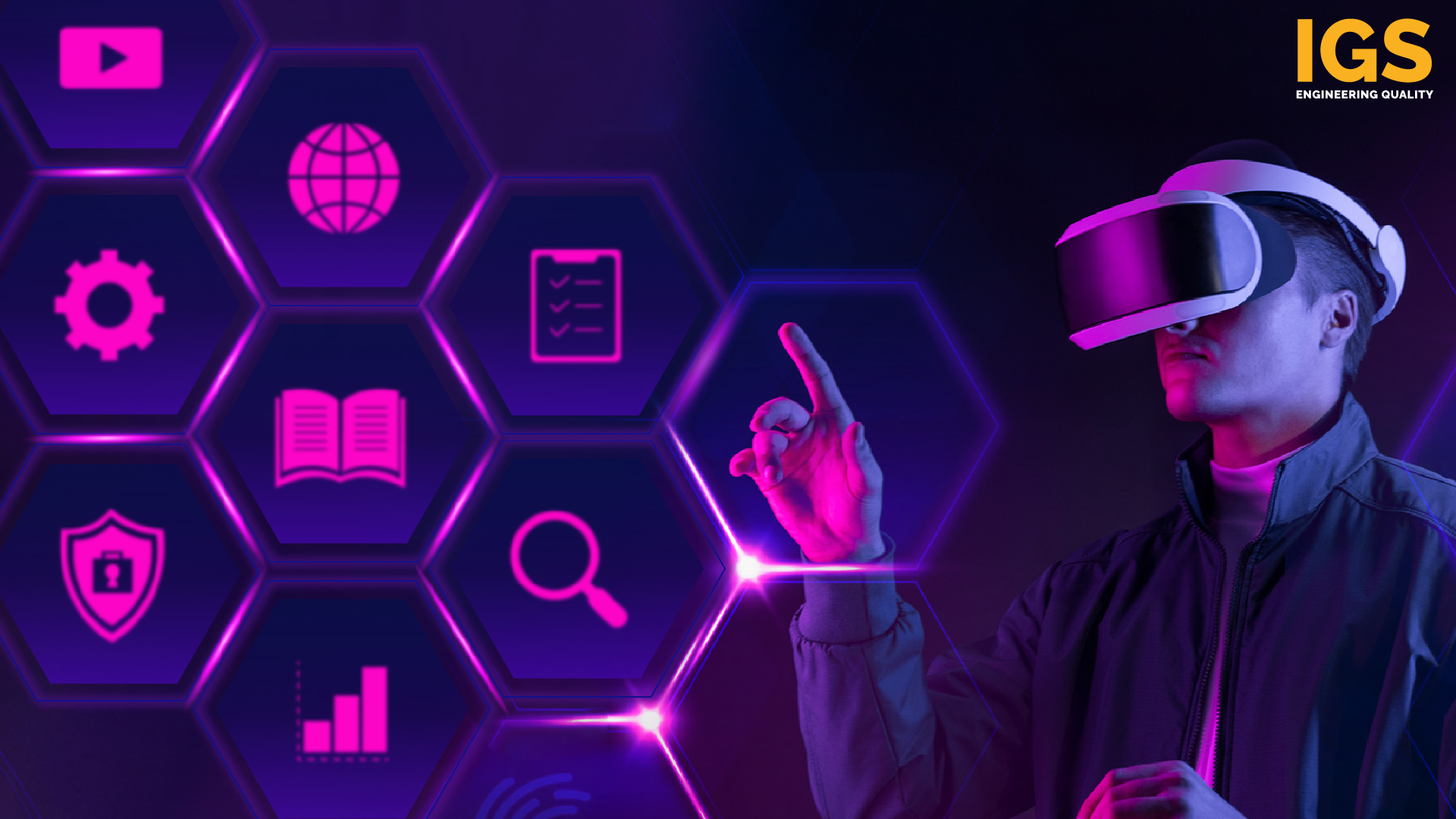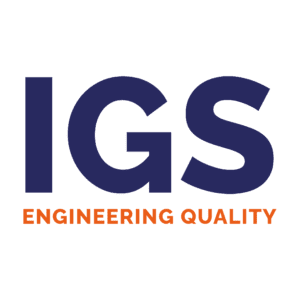EdTech Innovations with AR/VR: Quality Engineering Insights

Imagine this: instead of staring at a dusty textbook, you’re dissecting a frog in a virtual reality world. Or picture exploring the pyramids of Giza from your living room, Pretty cool, right? thanks to augmented reality. AR and VR are revolutionizing education, transforming classrooms into mind-blowing learning adventures.
But here’s the thing – have you ever been on a rickety rollercoaster with rusty tracks? Not exactly a thrilling experience, is it? The same goes for AR/VR Edtech. We want students to be whooping with excitement, not feeling queasy from technical glitches. That’s where Quality Engineering (QE) steps in – it’s like the team that meticulously checks the rollercoaster for safety and ensures a smooth, unforgettable ride.
Think of your brain as a muscle. Textbooks and lectures can feel like lifting weights – good for building knowledge, but not exactly engaging. Studies show we only remember about 10% of what we read and 20% of what we hear . But AR/VR? It’s like a high-octane training session, throwing students right into the action. Research suggests we can recall up to 90% of information learned through simulated experiences. That’s the power of immersive learning – it gets our brains pumped and knowledge sticks!
Here’s the catch: to unlock this potential, AR/VR Edtech needs a solid foundation. That’s where the QE crew comes in. They’re not just about bug squashing – they’re proactive superheroes who ensure the entire learning experience is top-notch.
The Pillars of a Thrilling Ride
Let’s break it down. Imagine a student trying out a virtual chemistry experiment, but the controls are wonky like a faulty joystick. Not exactly conducive to a safe learning environment, right? QE identifies these issues before students even get a chance to experience them. They’re like the meticulous engineers who ensure the rollercoaster controls are smooth and responsive.
Accuracy is also key. Imagine an AR app showing the Eiffel Tower in the wrong place – not exactly helpful for aspiring geographers! QE makes sure the educational content is factually sound, so students are learning the right stuff. They’re like the team that double-checks the historical landmarks on the rollercoaster tour to ensure an accurate and educational ride.
But learning shouldn’t be a one-size-fits-all experience. Some students are visual learners, some learn best by doing. The beauty of AR/VR is that it caters to different styles. But what if a student with visual impairments can’t interact with an AR app, or a student with motor control difficulties struggles to navigate a VR world? That’s where QE shines again. They prioritize accessibility features, making sure everyone gets a ticket to ride the rollercoaster of learning, regardless of their background. Think of it as making sure the rollercoaster has comfortable seats and safety harnesses for everyone to enjoy the ride.
Building a Collaborative Playground
Building these amazing AR/VR experiences isn’t a solo act. It’s a team effort, with developers, testers, educators, and content creators working together. QE acts as the communication hub, ensuring everyone’s on the same page and keeps the project running smoothly. It’s like the conductor of the rollercoaster symphony, making sure all the elements work together for an incredible learning experience. Imagine the developers as the engineers who build the tracks, the educators as the storytellers who craft the narrative, and the content creators as the artists who design the scenery. Everyone plays a crucial role in making the ride phenomenal.
The Future of Learning: A Continuous Climb
As AR and VR technologies continue to evolve, so too will the role of QE. They’ll constantly adapt and embrace new tools, keeping the rollercoaster of learning exciting, educational, and accessible for all. After all, the future of education is immersive, engaging, and built on a foundation of quality. Buckle up, it’s going to be a wild ride!
Why is QE Critical for AR/VR Edtech?
The stakes are considerably higher in Edtech compared to a typical software application. AR and VR experiences have the power to shape young minds and ignite a passion for learning. Here’s why robust QE practices are essential:
- Seamless Learning, Not Dizziness: Imagine a student navigating a virtual world riddled with glitches that induce motion sickness. Not ideal for learning! QE ensures smooth performance and minimizes technical hiccups that disrupt immersion and cause discomfort. This translates directly to increased user engagement and improved learning outcomes.
- Safety First, Especially in Virtual Worlds: AR and VR experiences can involve intricate simulations or physical movements. Imagine a student attempting a virtual chemistry experiment with inaccurate controls or faulty haptic feedback – a potential safety hazard. QE helps identify and address these issues before they impact student safety, mitigating potential liabilities and reputational risks.
- Accuracy is Paramount: AR and VR Edtech solutions should be gateways to knowledge, not misinformation factories. Imagine an AR app displaying incorrect historical landmarks or a VR simulation with inaccurate scientific data. QE ensures the educational content is factually sound and reinforces accurate learning. This fosters trust in the platform and strengthens the overall value proposition.
- Inclusivity for All Learners: The beauty of AR and VR lies in their ability to cater to diverse learning styles. Imagine a student with visual impairments unable to interact with an AR app or a student with motor control difficulties struggling to navigate a VR environment. QE prioritizes accessibility features and ensures all learners have an equal opportunity to participate. This promotes inclusivity and broadens the potential impact of AR/VR Edtech solutions
The Pillars of QE in AR/VR Edtech: An IGS Perspective
At IGS, We understand the critical role that Quality Engineering (QE) plays in the successful development of AR/VR Edtech solutions. Here’s how we approach these key areas to ensure a high-quality and immersive learning experience:
- Early and Continuous Testing: IGS advocates for integrating QE testers from the very beginning of the development lifecycle. This fosters a collaborative environment where potential issues are identified early and addressed promptly. Our robust testing expertise helps save resources and ensures the final product is polished and user-friendly. This proactive approach translates into a more cost-effective development process for Edtech companies and a more positive user experience for students and educators alike. IGS offers a range of early testing methodologies, including requirements analysis, risk-based testing, and usability testing. These techniques help identify potential roadblocks early in the development phase, ensuring the project stays on track and avoids costly rework later.
- Compatibility Testing: Understanding the complex interplay of software is crucial for AR/VR experiences. At IGS, we have a proven track record of ensuring seamless compatibility across various platforms and devices. This maximizes the reach and accessibility of the Edtech solution, allowing it to be used by a wider range of students regardless of their device or operating system. IGS leverages a global network of testing labs equipped with a vast array of devices and mobile platforms. This allows us to perform comprehensive compatibility testing and identify any potential compatibility issues before launch.
- Performance Testing: IGS recognizes that a smooth and lag-free experience is paramount for captivating learning in AR/VR environments. Our rigorous performance testing methodologies ensure smooth operation and prevent disruptions in the immersive world. This guarantees a high-quality learning experience that fosters deeper engagement for students. IGS utilizes industry-leading performance testing tools to assess factors like frame rate, latency, and resource utilization. By identifying and addressing performance bottlenecks early on, we ensure a smooth and immersive learning experience for students.
- Usability Testing: At IGS, we recognize the importance of intuitive and user-friendly interfaces for AR/VR Edtech solutions. Our QE process integrates usability testing throughout the development lifecycle. This ensures a focus on clarity, logical design, and ease of use for students. By leveraging our expertise in user experience (UX) best practices, we help identify areas for improvement and contribute to a seamless learning experience.
Conclusion:
By leveraging our expertise in these key areas, IGS empowers Edtech companies to build high-quality AR/VR solutions that unlock the transformative potential of immersive learning. We are committed to working collaboratively with developers, educators, and content creators to shape the future of education.
